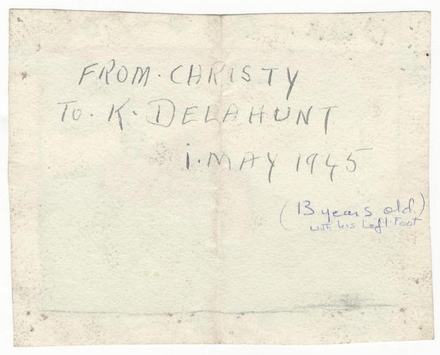

For his mother, the moment was proof that her son's mental capacity was not diminished as the doctors believed.įollowing this transformative communicative experience, however, Brown eventually turned inward over time. For Brown, the moment finally opened an outlet for communication. The fact that he made a coherent letter, Brown admits, was either coincidence or instinct, writing that his intent was to make "a wild sort of scribble with it on the slate." Whatever the case, it was a transformative moment for both him and his mother.

One day, while his sister was playing with a piece of chalk next to him, Brown took the piece of chalk out of her hand with his left foot and wrote an "A" on the ground. Then, when Brown was five years old, his mother finally saw evidence that she was right. As time went on, Brown's mother continued to believe in her son's normal mental capacity in defiance of doctors and peers. While the rest of Brown's family accepted this false diagnosis of Brown's intellectual capacities, his mother refused to believe it. However, because little was known about cerebral palsy at the time of Brown's diagnosis, the doctors advised his mother and the rest of the family that Brown was likely mentally disabled and that she should give up any hope of him having a normal and productive life. The disorder does not, however, generally affect a child's intellectual function. These damages generally occur while the mother is pregnant, though they can occur during childbirth as well. Cerebral palsy is the result of damage to the parts of the brain that control motor function. Afraid that there was something seriously wrong with her child's health, she took him to a doctor who diagnosed Brown with a severe and incurable disorder known as cerebral palsy. At four months old, however, Brown's mother noticed that her son could not hold his head upright and lacked motor control of the rest of his body. When Brown was first born, neither his doctors nor his parents noticed symptoms or behaviors to lead them to think he was anything but a normal, healthy child.


In 1989, the book was adapted into an Academy Award winning film starring Daniel Day-Lewis. Born with severe cerebral palsy, Brown went on to become a successful author, painter, and poet, even though he lacked control and dexterity of his limbs, with the exception of his left foot. My Left Foot (1954) is Irish author Christy Brown’s autobiography.


 0 kommentar(er)
0 kommentar(er)
